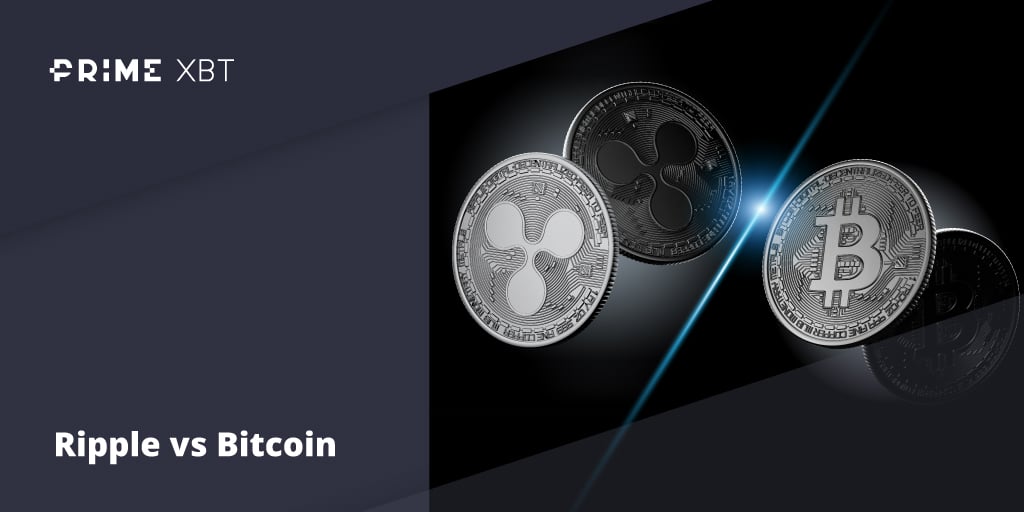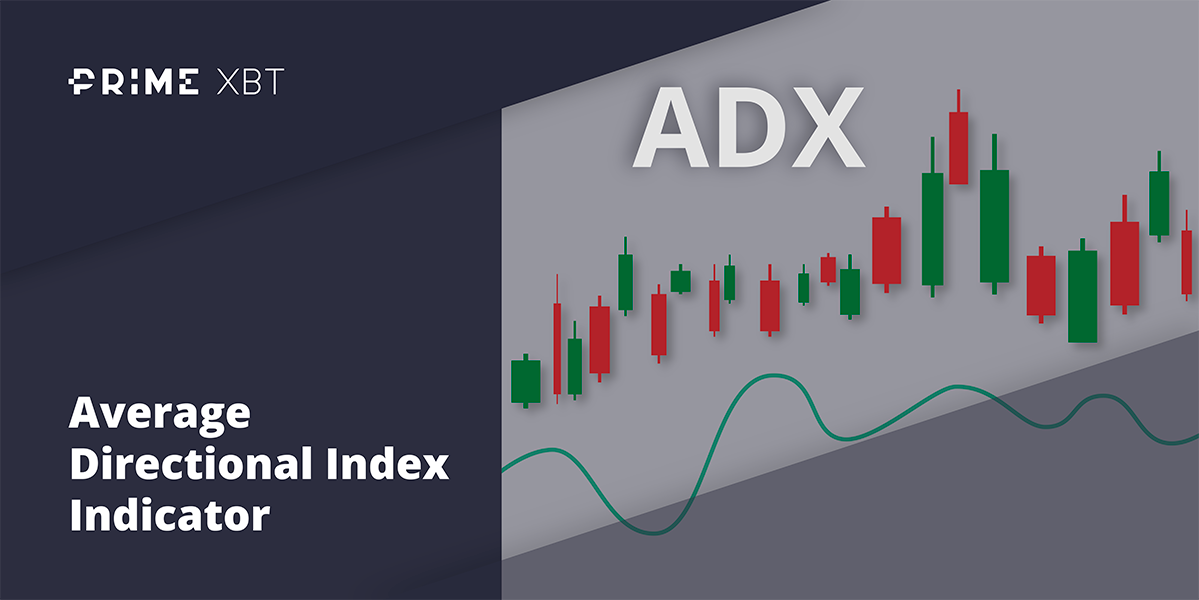Fed Chair Powell told congressional lawmakers on Wednesday that the central bank is determined to bring down inflation and has the ability to make that happen. Along with expressing resolve on inflation, Powell said economic conditions are generally favourable, with a strong labour market and persistently high demand. However, he also acknowledged that achieving a soft landing may be difficult under the current situation.
The markets lost steam as a result of his comments, with stocks retracking gains made earlier in the week after they returned from holiday but rebounded into the end of the week after the University of Michigan Consumer Sentiment Survey results was published on Friday. While the main reading of 50 was nothing to cheer about, investors liked a figure inside the report which showed 12-month inflation expectations by consumers easing back to 5.3% in the actual figure from the 5.4% in the preliminary readings.
The huge rebound on Friday led the markets to close in positive territory for the first time in three weeks, with the Dow finishing 5.4% higher, the S&P up nearly 6.5%, and the Nasdaq surging 7.5%.
The US 10-year Treasury yield remained flat at 3.136% as with the USD, with the DXY staying around 104 as the currency markets remained locked in consolidation as no currency managed to make sustainable movement against another.
Over in Europe, the UK CPI report released on Wednesday showed that UK inflation hit 9.1% year-on-year. Consumer prices rose by 0.7% month-on-month in May, slightly above expectations for a 0.6% rise but well short of the 2.5% monthly increase in April, indicating that inflation is slowing somewhat, which may give the Bank of England some respite next month after 5 rounds of rate hikes.
With the USD not making any big movement, Gold saw subdued action as well, remaining around the $1,830 level. Silver lost around 4% as fears of recession continue to put it under pressure.
Oil eased for the second week after the latest weekly US oil inventory figures have been delayed to next week due to technical issues. Fears of an entrenched slowdown in China, coupled with Fed Chair Powell’s determination to fight inflation have caused traders to dump oil in anticipation of weaker demand. The WTI Crude dropped a hefty 9% while Brent eased almost 5%. Both distillates are a tad higher in the new week after the G7 nations announced in the weekend’s G7 meeting that they will aim to cap the price of oil exports.
More influential news this week with regards to oil will be the OPEC+ meeting. OPEC+ is scheduled to meet again this week on June 30, where the oil cartel is expected to stick to a plan to only slightly accelerate hikes in oil production in July and August. Their response could determine the direction of the oil markets as the black gold undergoes a period of heightened volatility.
Cryptocurrencies had a quiet week, with crypto majors BTC and ETH both locked within a 5% range. Altcoins performed better, with many popular tokens clocking gains of between 10-25% as the oversold situation and lower liquidity made it easier for whales to pump altcoins. Eventually the positive action flowed into BTC and ETH, who are recovering well from the steep falls the week before.
While the stock market’s rebound at the end of the week helped crypto prices recover, funding rates are turning consistently positive heading into Monday. This shows that traders are getting more bullish compared with the last two weeks where funding rates were mostly in negative territory. However, funding rates are historically a contrarian indicator so funding rates moving higher is a sign of overbought conditions.
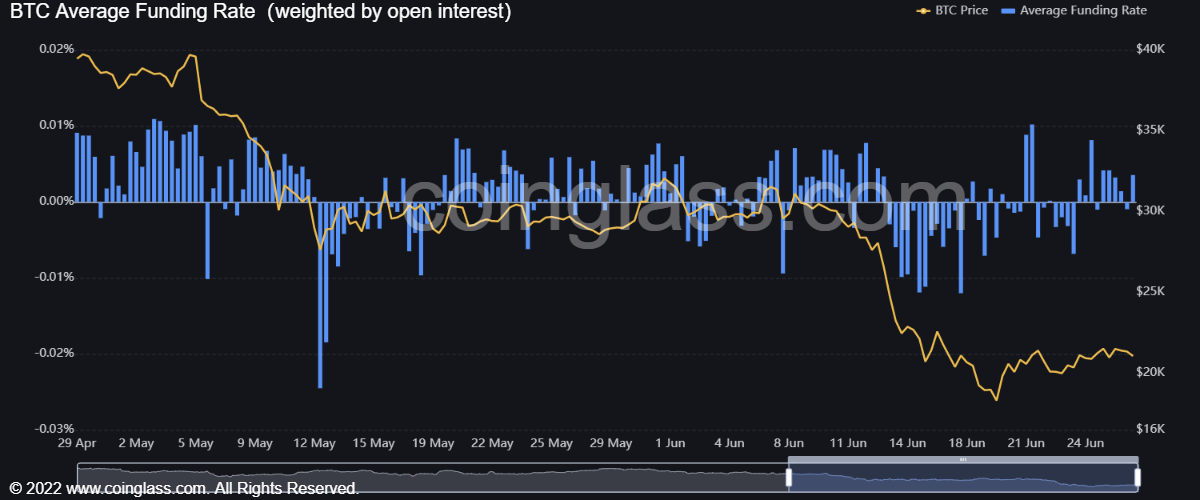
Canada Fading BTC Trade as Regulators Get Tough
Canada’s Purpose BTC ETF sold more than 24,000 BTC last Monday, around half of its total holdings, merely a day after its holdings reached an ATH.
While not having a direct impact on BTC price, this sudden redemption may be attributed to fears of regulation as the Ontario Securities Commission has just imposed hefty penalties and ban on a couple of crypto exchanges in the past week.
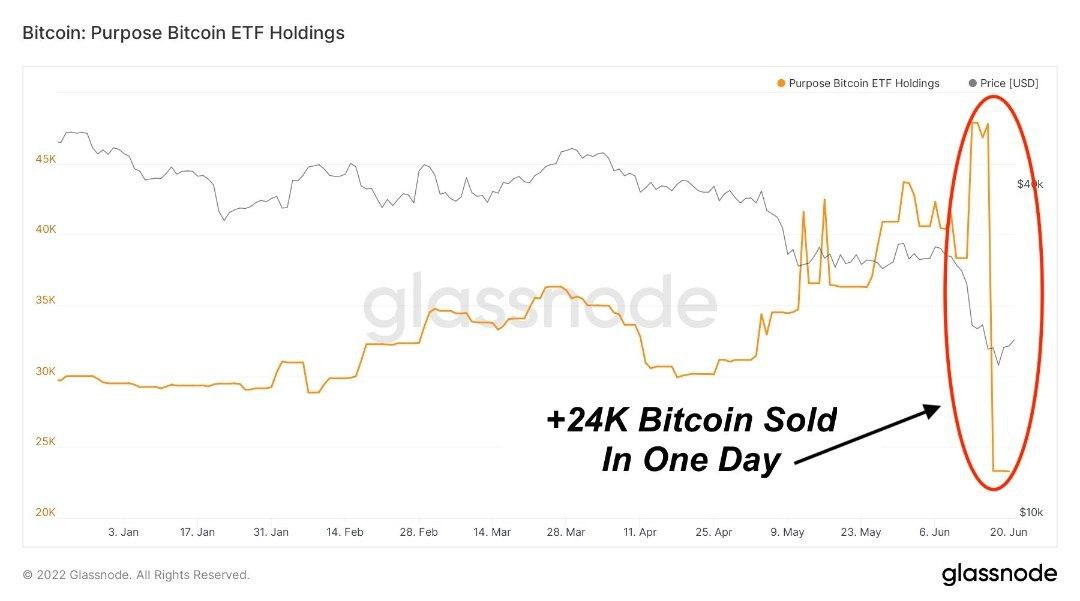
Further to that, the new Short BTC Strategy Fund’s inception may also have contributed to some ETF players switching from taking long positions to short positions.
ProShares, the manager of the Short BTC Fund, announced that the first of its kind short BTC strategy fund (BITI) traded more than 870,000 shares, or $35 million of value, on its second day of trading on the NYSE.
Most experts do not think the availability of this Short BTC ETF may impact BTC’s price as the industry already has instruments readily available for traders to take short positions on exchanges.
BTC Down, Yet Not Down Enough
BTC has experienced one of its furthest deviations below its 200-day trend in history. The Mayer Multiple is currently trading at 0.478, meaning BTC’s price is trading at a 52.2% discount to the 200-day Moving Average.
To illustrate how rare such an event is, throughout BTC’s history, prices have only closed at a Mayer Multiple value of 0.5 or lower on 3% of all trading days. However, based on previous bear market cycles, the multiple has room to move lower, where its lowest point reached in the 2012 cycle was 0.225.
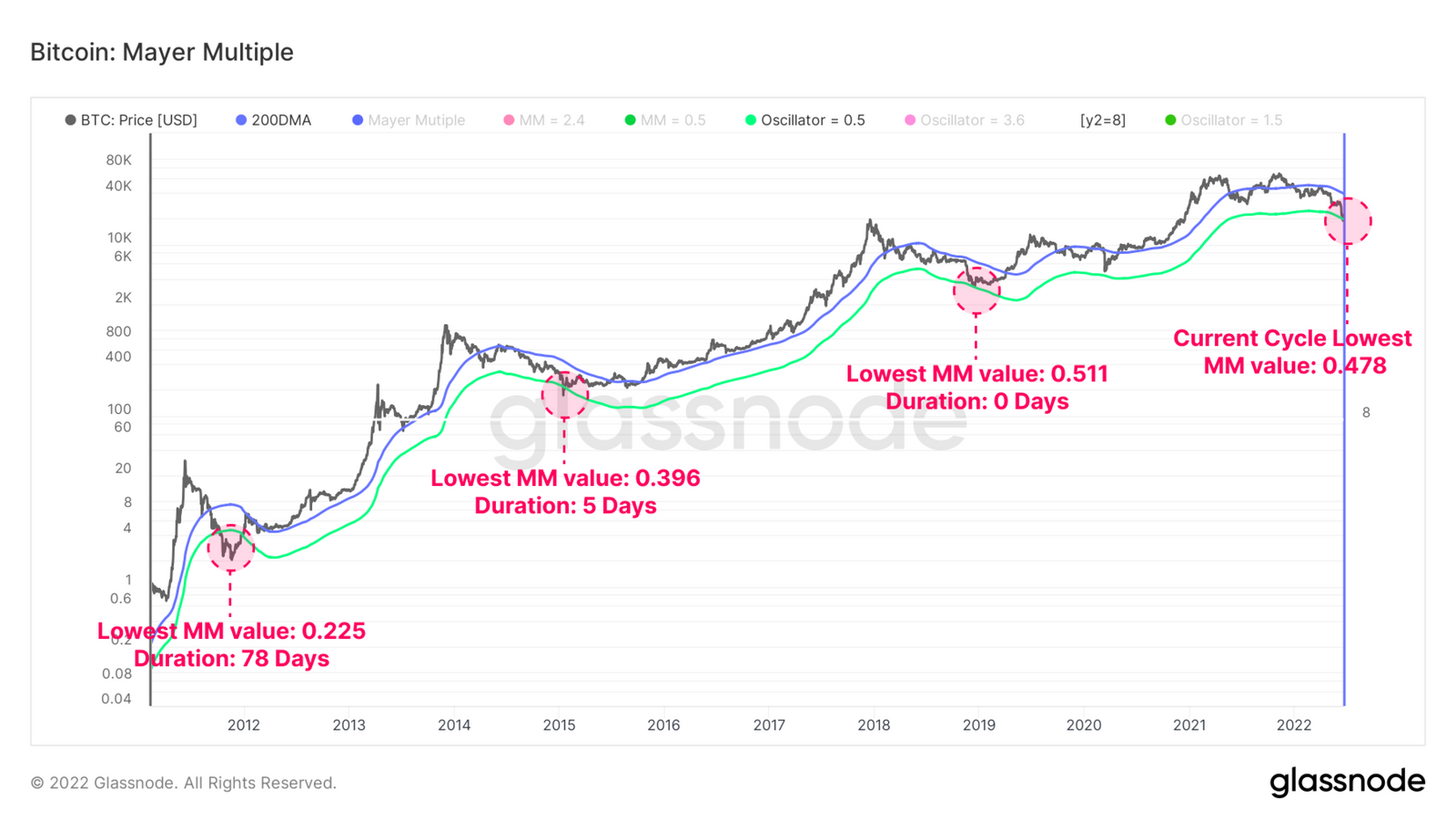
Similarly, using previous bear market cycles as reference indicates that while we are near the cyclical bottom, we are not quite there yet, as the current cycle drawdown is 73.3%. Previous cycles had bottomed between drawdowns of between 74% to 84%.
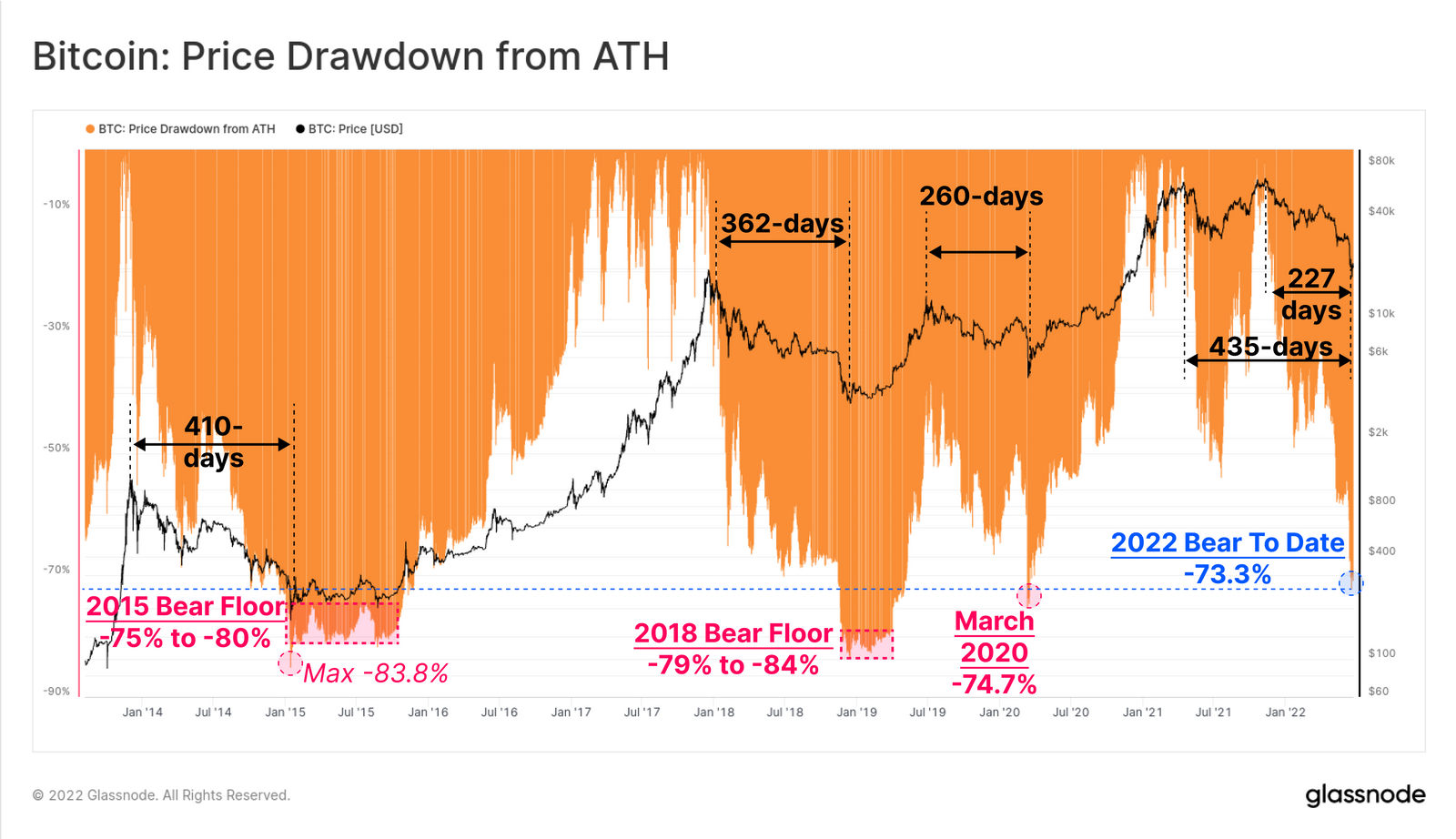
Small Investors Nibble As Mid-Sized Holders Reduce BTC
The number of ‘wholecoiners’ has rocketed over the past week as the price of BTC fell. The number of addresses with at least 1 BTC has grown by more than 15,000 over the past two weeks.
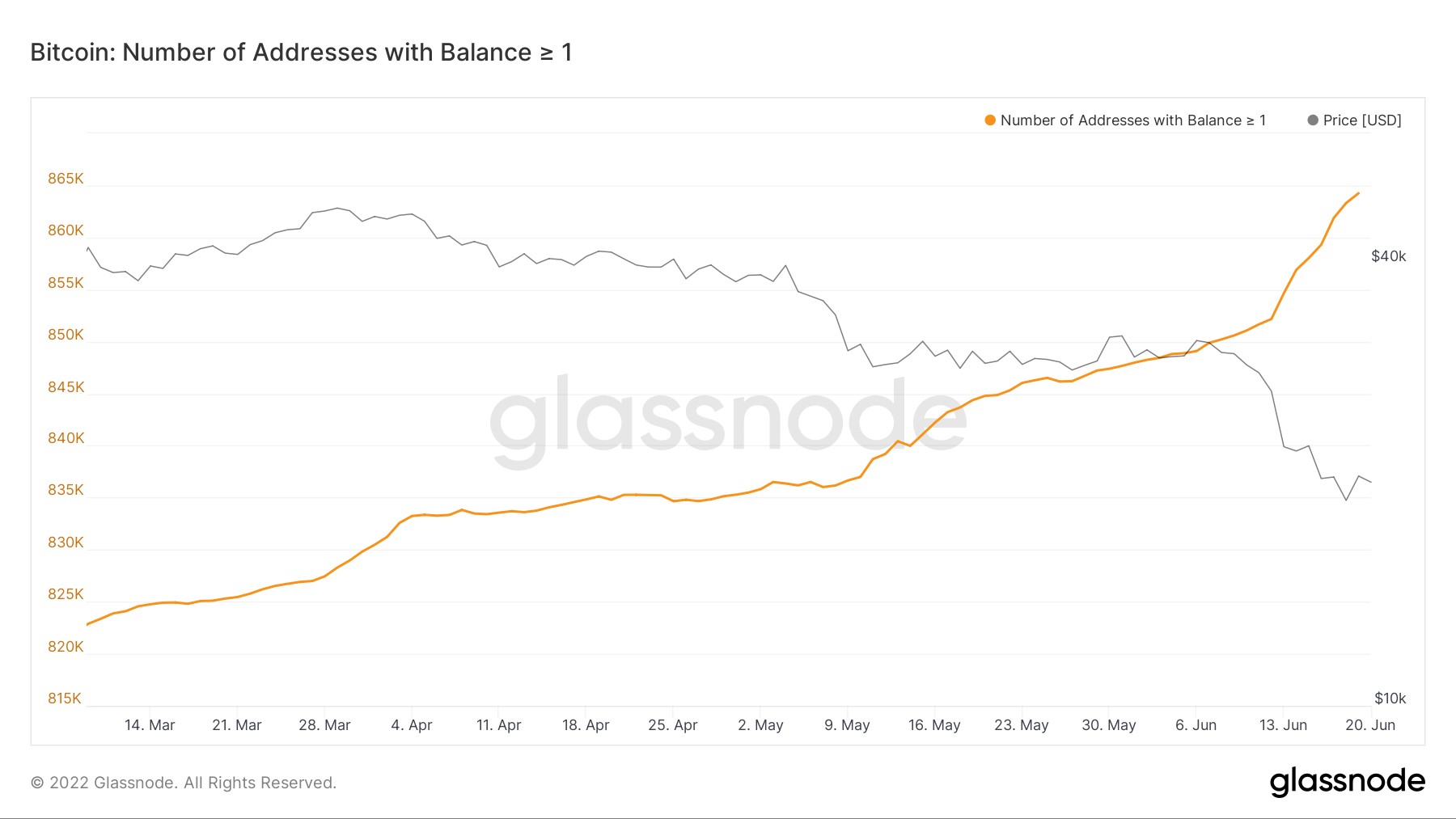
Small stackers have also grown phenomenally, a sign that retail players are taking the dip to stack sats. BTC has gained many small holders in the past seven days, as small wallet addresses containing 0.1 or more BTC continue to accumulate BTC at a rapidly increasing rate.
The number of addresses with at least 0.1 BTC has also grown by around 100,000 since 13 June.
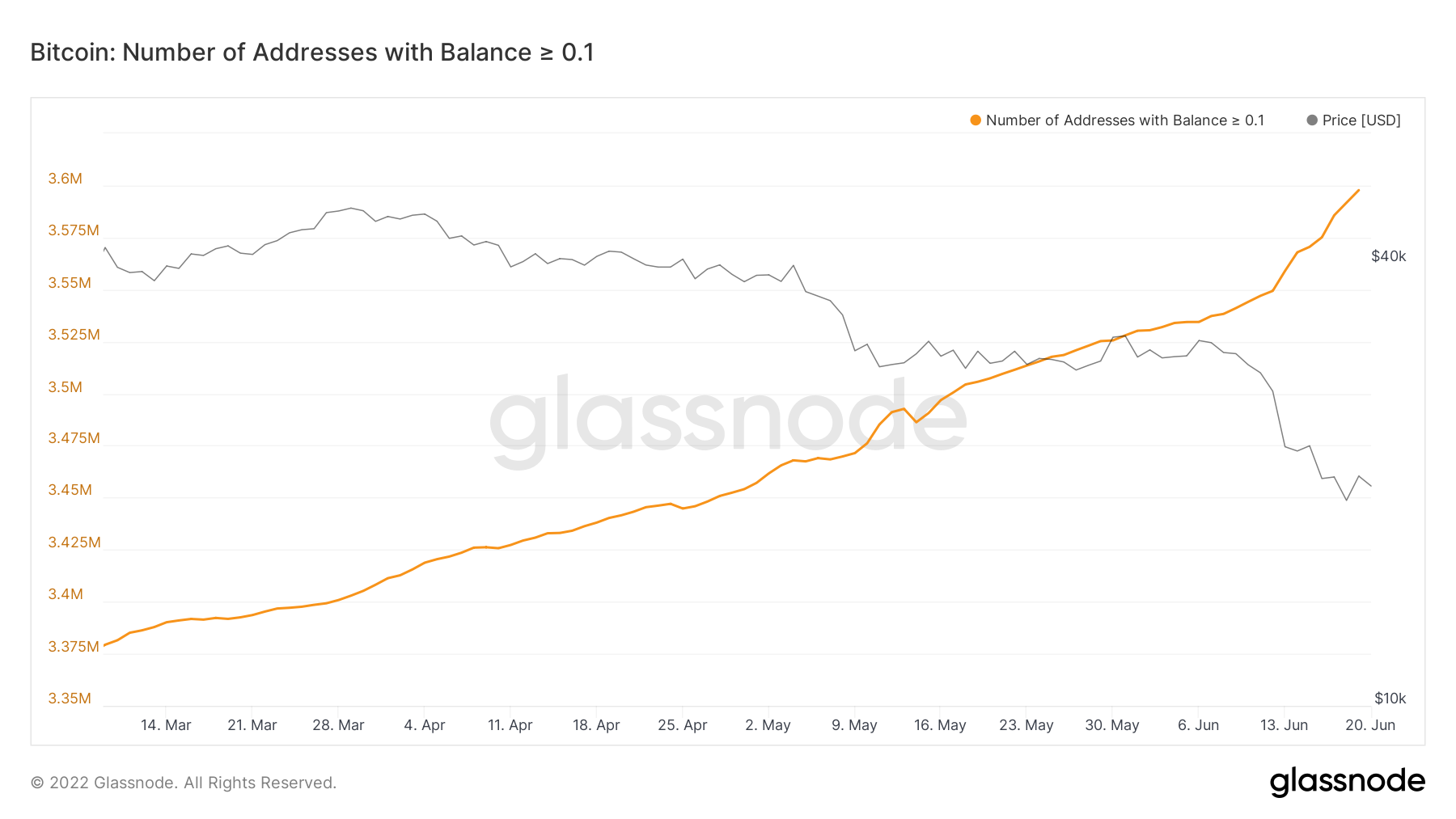
In contrast, however, the number of wallets containing more than 100 BTC has dropped by 136 over the same period. This means that mid-sized whales could be unloading their bags to new smaller holders, which is a good sign towards the decentralisation of influence on BTC over the long-term.
BTC Miner Activity Mixed with Both Accumulation and Sale Ongoing
Interestingly, some miners have also started accumulating BTC as the miner’s net position in BTC has increased last week after a heavy drawdown in the week before.
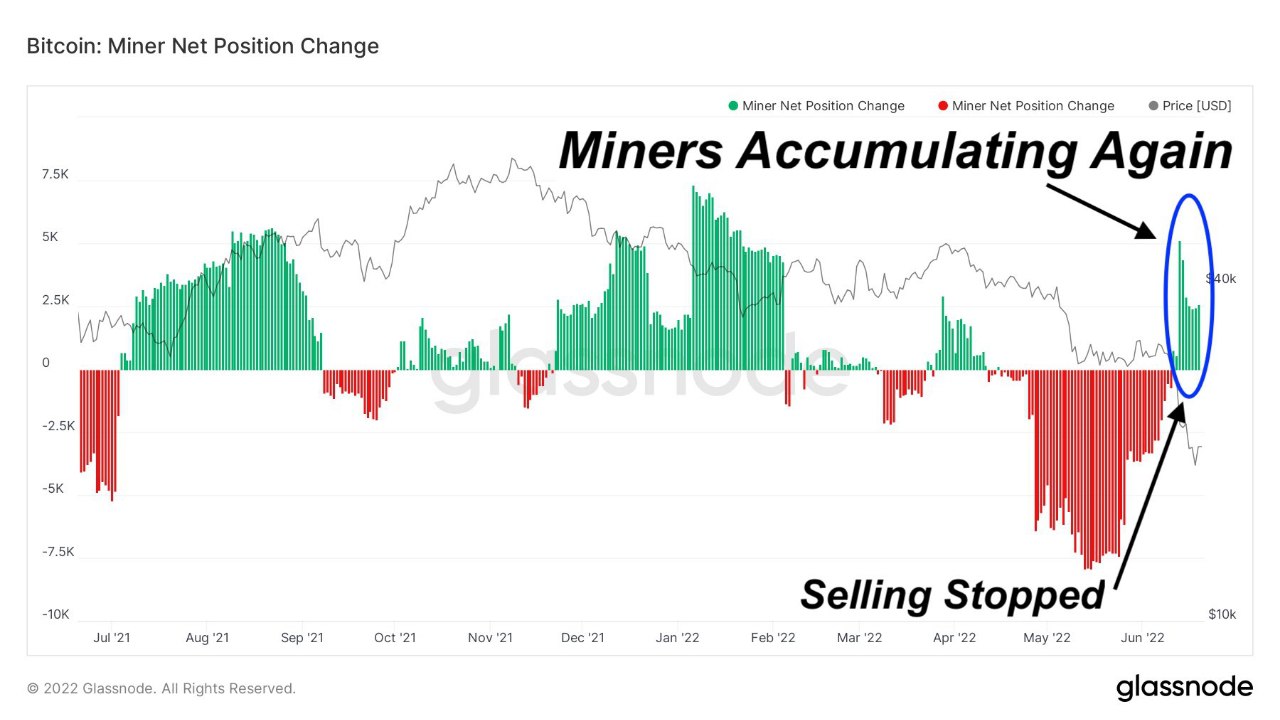
However, there are other miners who are still selling their BTC. This difference in action could be due to a difference in financial positions amongst miners. Those that have higher costs to bear may continue to sell BTC, while those with lower mining cost and have excess cash could be adding to their stash.
Dog Meme Coins Battle for Supremacy
DOGE continues to pop higher last week after Elon Musk repeated his support for the cryptocurrency on Tuesday at the Qatar Economic Forum in Doha. Musk stated at the Qatar Economic Forum that he buys and backs it because people “who are not that wealthy” have requested him to.
Even though DOGE had a phenomenal 50% rise, the copycat dog coin, SHIB, was not far behind. SHIB surged 48% in the week amid a new proposal that suggested changes to how its ecosystem token BONE would be used on the ShibaSwap platform.
BONE, a governance token and the main token emitted as yield rewards, would be used as fees to perform actions on the upcoming Shibarium protocol, a layer 2 protocol atop Shiba Inu that would support native app deployment and development.
However, at the moment, DOGE appears to have the advantage in terms of percentage increment as its price has continued to edge higher over the weekend while SHIB appears to find trouble breaking out of its mid-week high.
MATIC Becomes 3Rd Most Used Blockchain as Whales Accumulate
MATIC large holders have been accumulating the token for about six weeks. The tiers of holders ranging from 10,000 to 10 million coins held have collectively added 8.7% more to their bags in MATIC over the past month.
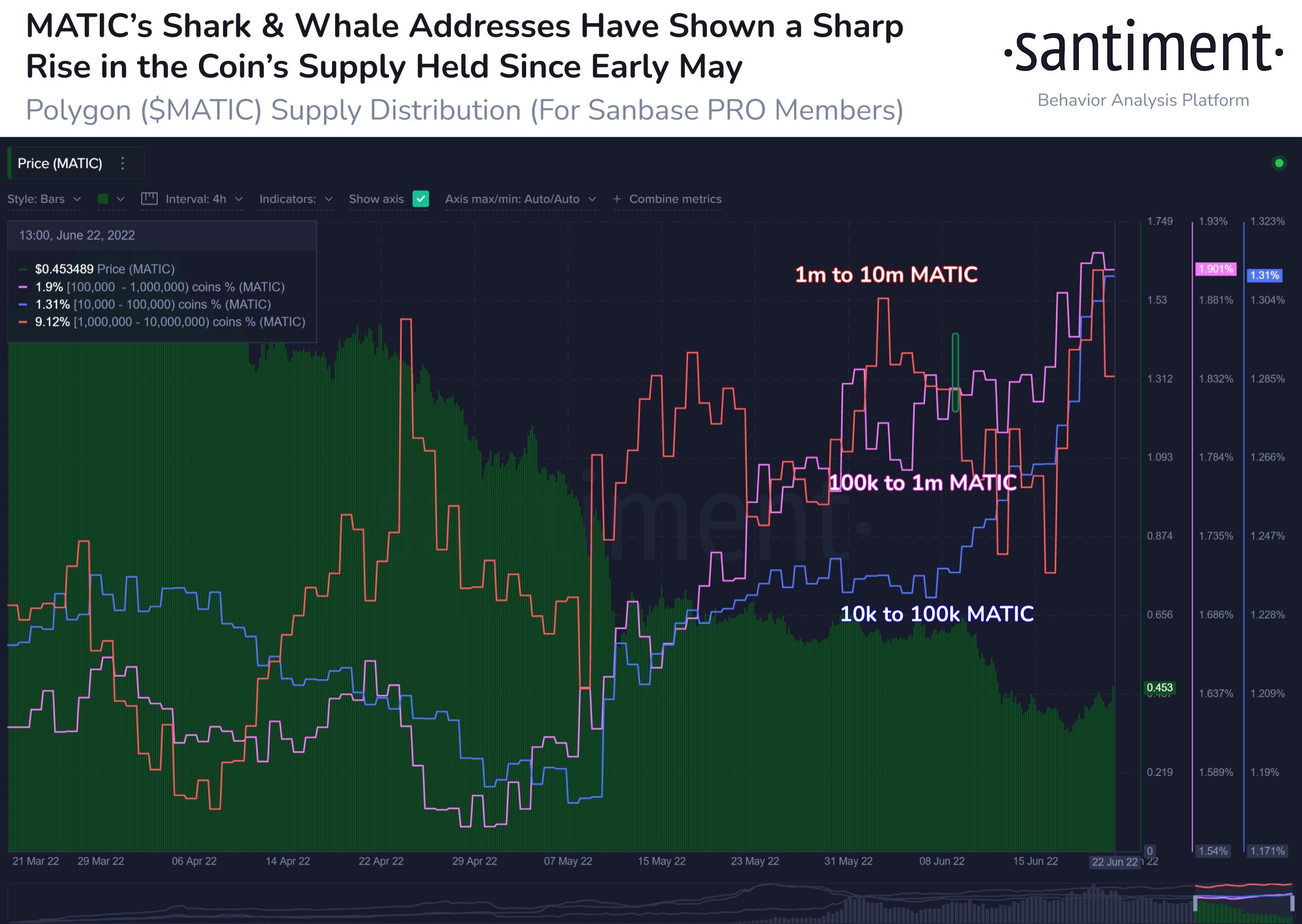
This increase in purchase coincides with a rise in its number of active addresses, possibly implying that MATIC users are very actively engaging with the blockchain and are accumulating the token on dip not just to invest in, but also potentially for usage. This is a good sign of adoption and could lay the foundation for MATIC to outperform many other blockchains in the coming bull cycle.
All these positives have caused the price of MATIC to double over the past week, proving that tokens with good fundamentals can still reap traders a good profit despite the market downturn. Other popular altcoins like FTM, XRP, AAVE, SOL, BNB, also saw gains of between 10-25% over the past week when the price of BTC and ETH consolidated.
ETH Activity Drops, Miners Leave in Anticipation of PoS
Interestingly, the level of engagement on ETH has dropped and BNB Chain now has almost double the number of user engagements compared with ETH. Even though the market cap between the two top 3 coins is a huge $100 billion difference, nonetheless, it could mean that BNB may give ETH a run for its money in the next cycle as its users continue to skyrocket while that of ETH continues to fall.
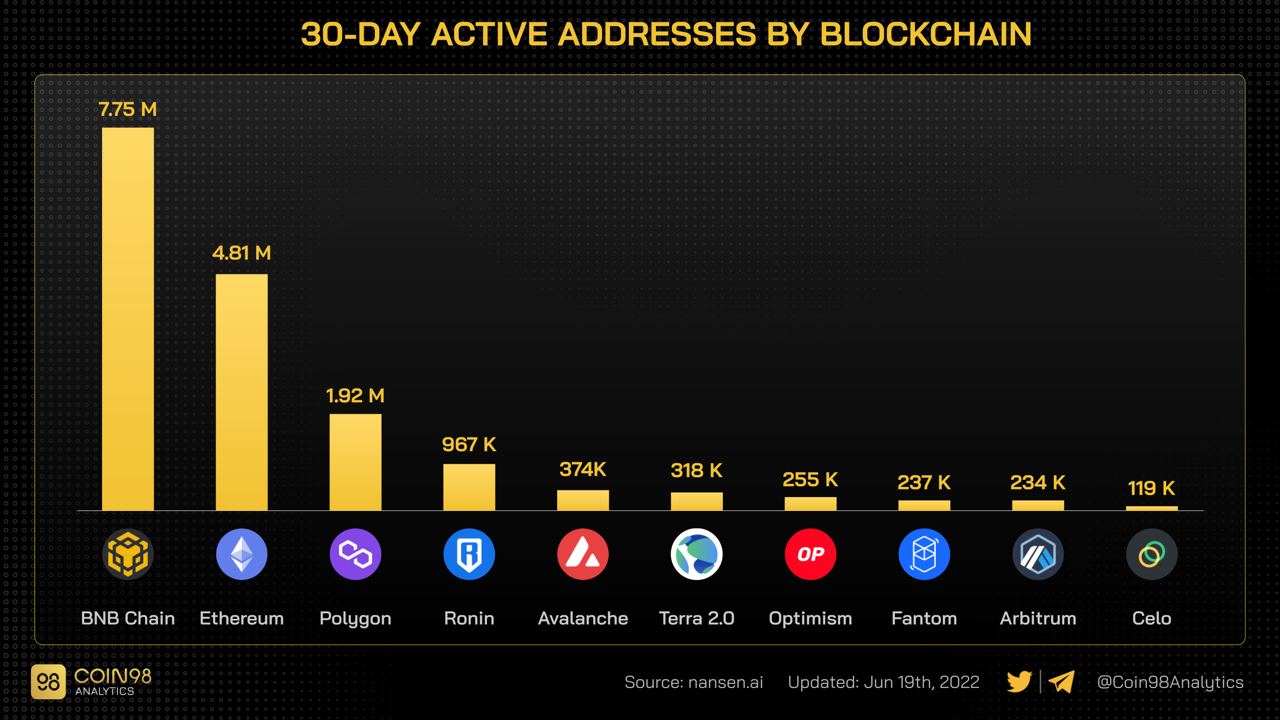
A fall in ETH engagement can also be seen from its hashrate, which has shown a decline of over 10% since mid-June after it surpassed the all-time high of 1000TH/s in May. This could be a result of miners leaving as the sharp price fall in ETH over the past 2 weeks has caused ETH miners’ earning on ETH to fall by 50% compared with a month ago.
Furthermore, with the Merge expected in September, ETH will transition from PoW to Pos, where miners will cease to earn block rewards as these will instead be paid to stakers. Henceforth, miners will only be paid a small part of network fees, which could make mining ETH unprofitable. Thus, the hashrate of ETH is expected to continue falling as miners continue to leave the scene. However, this is not something to be particularly concerned about since hashrate will no longer be representative of its network health after ETH transitions into PoS.

